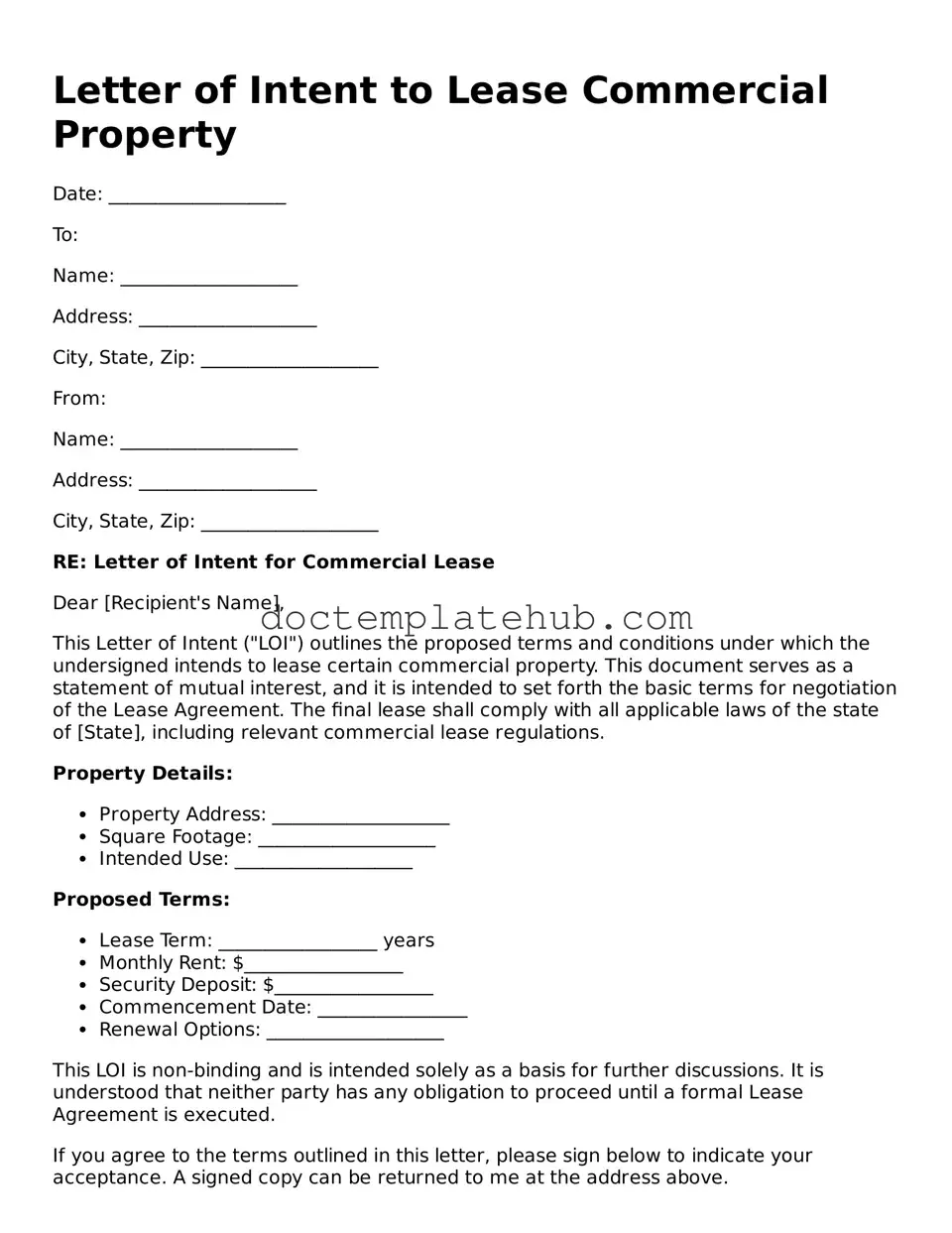What is a Letter of Intent to Lease Commercial Property?
A Letter of Intent (LOI) to Lease Commercial Property is a document that outlines the preliminary terms and conditions of a lease agreement between a landlord and a prospective tenant. It serves as a starting point for negotiations and helps both parties understand their intentions before drafting a formal lease. The LOI typically includes details such as the proposed rent, lease duration, and any special conditions that may apply.
Is a Letter of Intent legally binding?
Generally, a Letter of Intent is not legally binding. It is meant to express the parties' intentions and outline the basic terms of the lease. However, certain provisions within the LOI, such as confidentiality agreements or exclusivity clauses, may be binding if both parties agree to them. It’s important to clarify which parts of the LOI are intended to be binding and which are not.
Who typically prepares the Letter of Intent?
Either the landlord or the prospective tenant can prepare the Letter of Intent. Often, real estate agents or attorneys assist in drafting the document to ensure that it accurately reflects the interests of the parties involved. Regardless of who prepares it, both parties should review the LOI carefully before signing.
What should be included in a Letter of Intent?
A comprehensive Letter of Intent should include key elements such as the names of the parties involved, a description of the property, proposed lease terms (including rent and duration), any contingencies (like financing or inspections), and the timeline for finalizing the lease. Including these details helps prevent misunderstandings later in the leasing process.
Can a Letter of Intent be modified after it is signed?
Yes, a Letter of Intent can be modified after it is signed, but both parties must agree to any changes. If modifications are necessary, it’s best to document them in writing and have both parties sign the revised LOI. This ensures clarity and maintains a record of the agreed-upon terms.
What happens after the Letter of Intent is signed?
Once the Letter of Intent is signed, the next steps typically involve negotiating the final lease agreement. Both parties will work together to finalize the terms outlined in the LOI. This may include further discussions, due diligence, and possibly engaging legal counsel to draft the formal lease. The LOI serves as a roadmap for these discussions, helping to streamline the process.
